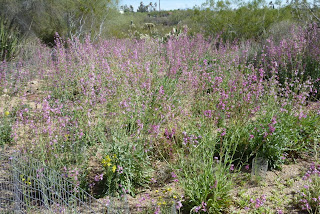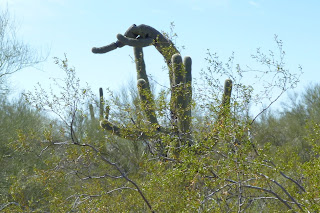On October 21, 2010, I flew to Toronto, Ontario from Seattle to meet my 3rd cousin Jenia (Jane) and her family. Her maiden name was Rubinchik, and my great-grantmother, Ida (Chaye Elke) Ginsburg was also a Rubinchik before her marriage. Her brother Hillel (Hillye) was Jane's great-grandfather. I thought most of that family was wiped out during the Holocaust, but Jane got in contact with cousin Rita (through the name Tolchinsky) and Rita also had her contact me, almost 2 years ago now. I sent Jane the 8-page copy of the interview I had with my bobae (T)Emma Nelson in November 1971, and Jane sent me to the U of W to get the interview with Bobae there. So began our acquaintance!
Aron Rubinchik
Now I was coming to meet her, and I was excited. Rita had told me Jane and her family were very nice, and she was right! I have had a wonderful time! I also found out that her grandfather Aron had a premonition about Hitler and got all of the family out of Belarus in 1941. They went to Uzbekstan, struggled but survived.
London is a bit over 100 miles from Toronto. I took a van shuttle. The driver was very friendly and told me a lot about Toronto and London. It took us 2.5 hours for the trip because of increased traffic, accidents, road repair, etc. (On the way back on the 25th, the same driver only took 1 hr and 45 minutes but we traveled at mid-day and not at 5 p.m.) I didn't see Toronto but later I did see a picture book of it. The highways out of town were amazingly wide and busy. Most of the way to London was either farm land (lots of corn) and lots of open spaces. The area was wide and very flat for the most part.
London has 358,000 people and was permanently settled in 1801, It is the home of the University of Western Ontario, with 35,000 students. on a beautiful campus. It is well known as a university city, for medical research and health care, insurance, and manufacturing. London was also the place where the idea for insulin (for diabetics) was discovered 90 years ago by Dr. Frederick Banting. Before the discovery, most diabetics died within a few months to a maximum of 2 years after diagnosis. The city is really spread out and still has many open spaces as well as lots of parks. It is known for its greenery.
My third cousin, Jane and her husband Boris picked me up in downtown London and took me to their home. It had been a long day, as I had gotten up at 5 a.m. in Seattle and didn't arrive at their home until 8 p.m. I met Boris' mother Bella (who is 83) who came to London 12 years ago from Israel when Boris's brother and family also came. She speaks a very little English, so we communicated with a bit of English, some Hebrew, and a bit of Yiddish--hers. Jane, Boris and I had a lovely salmon dinner, chatted for 2 hours and then I headed to bed. They have a lovely yard outside. In the yard in addition to flowers and shrubs, they have 2 kinds of blackberries, raspberries, currants, sour cherries, etc. She makes all kinds of jams. I really enjoyed her sour cherry confiture, with big chunks of cherries in it. They are big fruit eaters and have it for breakfast.
The next day Jane had off from her job as a computer specialist (she works a bit longer hours each day so gets off every other Friday). We had a lovely lunch of homemade quiche (my cousin Rita's recipe). She doesn't drive (her husband usually drops her off at work), so her uncle Ilya R. and his wife Ava picked us up, game me a tour of central London, where we walked around Victoria Park.

Jane, myself, and Ava in front of memorial in Victoria park.
Ava, Jane, and Ilya in front of memorial cannon.
The 3 cannon in the park were used in the seige of Sebastopol and were brought to Canada after the capture of that city by the British in 1855. Sir John Carling was instrumental in procuring the 3 cannons for this city. The cannon in this picture is British while the other 3 are Russian. This explanatory tablet was erected in 1907 and restored in 1987.
Ava and Ilya and his brother Isaak and his wife Raisa came to Canada 30 years ago. They had left Belarus and gone to Italy. There, the Canadian government suggested that they go to London because of their occupations (most were engineers--occupations more open to Jews to study in universities in Belarus--and Raisa was a French teacher...and also taught dance for fun). Jane, her sister, and Boris' family came ten years later and went to London because her uncle and their families were there. They really enjoy the London area--work hard and do well.
That night after lighting Shabbat candles, we had a lovely chicken dinner. Their son, Alex (Sascha) also came for dinner. He is 30, has degrees in anthropology and business, and works in marketing. He went to the local university, living at home while he went to school. His sister Vicky also studied there, but she lives in Windsor and works in Detroit, so I didn't get to meet her on this trip.
About an hour later, Ilya, Ava, Isaak, Raisa, and Jane's sister Nella and her husband Tony came over to visit and meet me. We looked at older family pictures and had dessert together--lots of fresh fruit and 3 different desserts that Jane had made.
Notice the little Canadian flags in the fruit.
On the left: Ilya, Ava and Jane
From center to right: Tony, Isaak, Nella, Raisa
Isaak, Raisa, Nela, Ava, Tony, me, Ilya, Jane
Saturday Boris and Jane took me to Niagra Falls. I had never been there before so it was a thrill. It was overcast all day but didn't start to rain until we finished seeing the falls. Boris parked away from the main sight so that I we would enter from the back and I could start to see the falls gradually, first from the mist, then the top, then the whole falls.

View from top walking to falls

Approaching top of Canadian side
The view is free, but trip behind the falls or a ride on a boat that gets one very close costs money, and helps cover the cost for running the tourist area. The falls also are used for hydroelectric power. You can see the boat on the left as it gets very close to the falls.

Close up of boat that goes to falls. Everyone is dressed in a raincoat.
Boris and Jane with top of Canadian side of falls in background
Off to one side of the falls is a very touristy town.
Farther down and on the other side of the river are the falls on the American side, right next to the Rainbow Bridge.

They took me on a tour that gave a closer view and then took us behind the mist at 2 portals. We got yellow plastic rain coats to keep from getting soaked.
Afterwards, we walked back to the greenhouse near where we had parked and saw some lovely flowers inside. We had to walk around two different wedding parties which were taking pictures inside. Often there is a butterfly exhibit in the greenhouse too.
We then drove to the casino had a great lunch there before heading home.
Sunday I was on my own as Boris, Jane, and much of her family went to Toronto for the funeral of Jane's aunt Anya's husband. Anya is the sister of Ilya, Isaak, and Jane's father Yefim (Haim) z"l. He had been very ill for several years and died on Thursday night.
So I "chatted" with Bella, walked on a lovely rural path to a mall about a mile away.
There I finally tasted Tim Horton's coffee. The van driver told me that Canadian's call Starbucks coffee "five bucks" coffee. Many prefer Tim Hortons, and there are many more of his shops around. Tim was a famous Canadian hockey player who started the chain. He died young, and his wife continued the shops, then selling them to others, who greatly expanded the # of shops. They sell brewed coffee, the smallest cup costing $1.17 plus tax.
They also sell pastries, sandwiches, and soup.
Bella can get 5 stations in Russian, one of which comes from Israel. They get it through "Rogers," their equivalent of Comcast or Cox cable. I watched a dance competition show with her, showed her family pictures, and also saw some of her family pictures on a digital frame.
Sunday night, Nela came back with her doggie Harper. Her children got him for the family 7 years ago. It was her first dog, but she could not imagine life without him.

Monday at 6 a.m. Boris got in a rental car and drove to Indianapolis, Indiana for work. I got up at 8, and Uncle Isaak picked Jane and me up at 9 to have brunch at his home. What a feast Raisa had prepared! Later they drove me to my van for my return ride to Toronto. I had a lovely visit and look forward to seeing them again.
































































